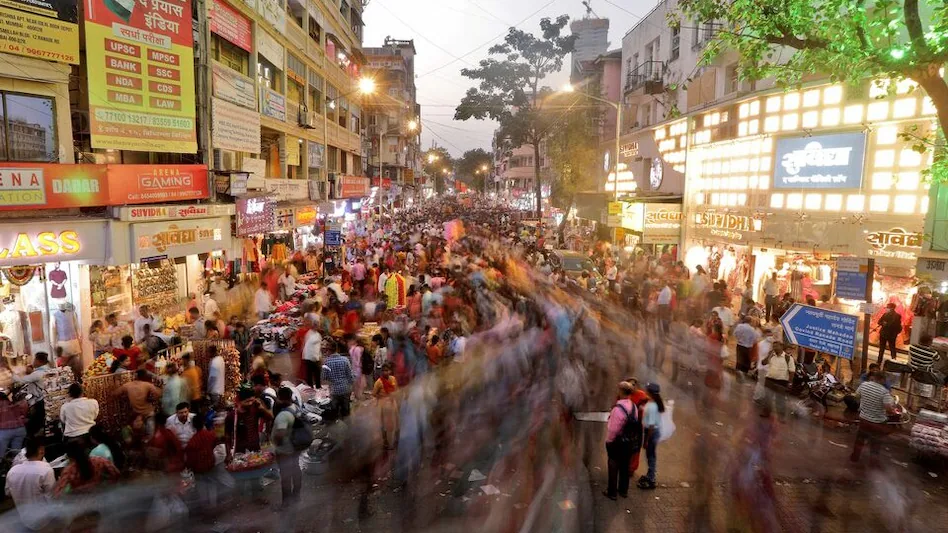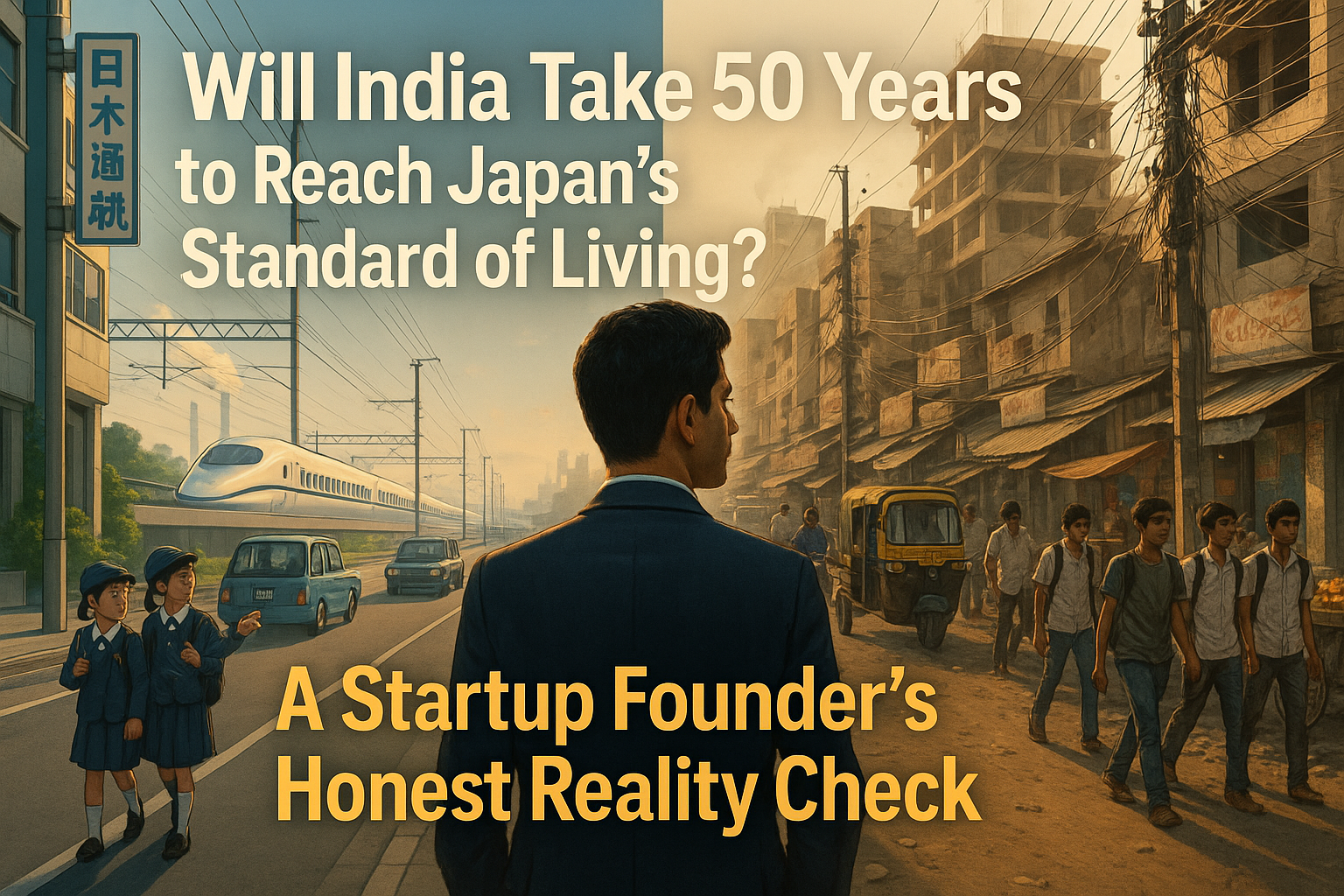Will India Ever Catch Up to Japan? “It will take us 50 years to become Japan”: Gurugram startup founder’s frank opinionToday, we often see and hear news in newspapers and news channels that India has become the fourth-largest economy in the world. Statistics show that India has overtaken Japan. It is a matter of pride to hear this, but is this the whole truth?
Ashish S, a startup founder from Gurugram, recently put forward a bitter but important truth in a viral LinkedIn post. He wrote,
“India’s current per capita income (per capita GDP) today is at the level where Japan was in the 1950s. This is an achievement, yes — but also a mirror.”
This statement of his makes one think.
The reality of figures
India’s per capita GDP in the year 2025 is around $2,400. This figure may sound big, but if we compare it with other countries, the picture looks different.
India is lagging behind countries like Kenya, Morocco and Côte d’Ivoire in this regard. And if we compare it with countries like South Africa, Libya or Mauritius, the difference is even more clear.
India’s total economy may have become very big, but when we divide this economy into the share of each citizen – that is, according to per capita income – we seem to be standing behind many small countries.
India has size, but is it enough?
India’s population is over 140 crores. This is a very large number, which is often called “demographic dividend”. Meaning, India has a large army of young workers, which can take the country’s economy forward in the coming years.
But the question is, are we able to use this youth power properly?
Ashish believes that nothing happens just by having size or scale. Unless we invest in our people — especially in education, health, and technical skills — this population may become a burden, not a boon.
Comparison with Japan: What is the difference on the ground?
Japan is a country that completely rebuilt its economy after World War II. In the 1950s, Japan was also struggling economically. But in the next 20 to 30 years, Japan invested so much in industry, technology, education, and quality that it became one of the most advanced economies in the world.
Japan achieved this progress not just by numbers, but by improving the basic needs of society — such as:
Improvement in education:
Japan made both school and higher education world-class.
Focus on manufacturing:
Japan built a strong industrial base — especially in automobiles and electronics.
Investment in human capital:
Japan left no stone unturned in improving the quality of its citizens — in health, hygiene, technical knowledge, all areas.
Why is India not seeing such development?
Today, some places in India have high-quality schools, colleges, and medical facilities — but these facilities are not available to every citizen. Even today, children in rural areas and small towns do not get complete primary education.
If we talk about STEM (Science, Technology, Engineering, Mathematics) education, then there are institutes like IITs and NITs in Indian cities, but millions of youth are still deprived of such education.
Most of the youth do not get proper skills for employment. They are educated, but do not have the training to work in the industry.

Weakness of manufacturing
Countries like China and Japan strengthened the manufacturing sector. They made everything from the smallest parts to international products in their country. This gave jobs to their people, and strengthened the country’s economy.
The manufacturing sector in India has still not become that strong. We import many things like mobile, electronics, auto parts from abroad. Unless we manufacture ourselves, we cannot become globally competitive.
Change in mindset and policy is necessary
If India has to reach the quality and standard of living like Japan, then it should not be happy with just the figures. For this, clarity in policies and the strength to implement them at the ground level is needed.
We have to increase investment in education, prioritize skill development, and open such paths for the youth that can make them self-reliant and innovative.
Are only startups and Digital India enough?
Startup culture is growing in India, which is a good sign. But this culture is still limited to a limited section – big cities, English-speaking youth and tech-savvy people.
Until this energy reaches the villages, small towns and common youth of India, this revolution is incomplete.
Digital India will also be successful only when every citizen has internet, technical knowledge and digital literacy.
Why can it take 50 years?
Ashish says that it can still take up to 50 years for India to reach the standard of living like Japan, if we look at the current pace and efforts.
Because:
- What Japan did was not just development, but a cultural and social transformation.
- In India, many sections are still socially, economically and digitally backward.
- We have resources, but there are still many shortcomings in priorities and implementation strategy.
In the end…
India is a great country – no doubt about it. We have youth power, resources, and now recognition on the global stage. But if we want every Indian to have a quality of life like Japan, we need to be happy with real changes on the ground, not just GDP numbers.
We need to do concrete work on issues like education, health, employment, and technical skills — and that too with access to every citizen.
As Ashish said,
“It is an achievement, yes — but it is also a mirror.”
It is now up to us to look at ourselves in this mirror — and not just celebrate, but prepare.
